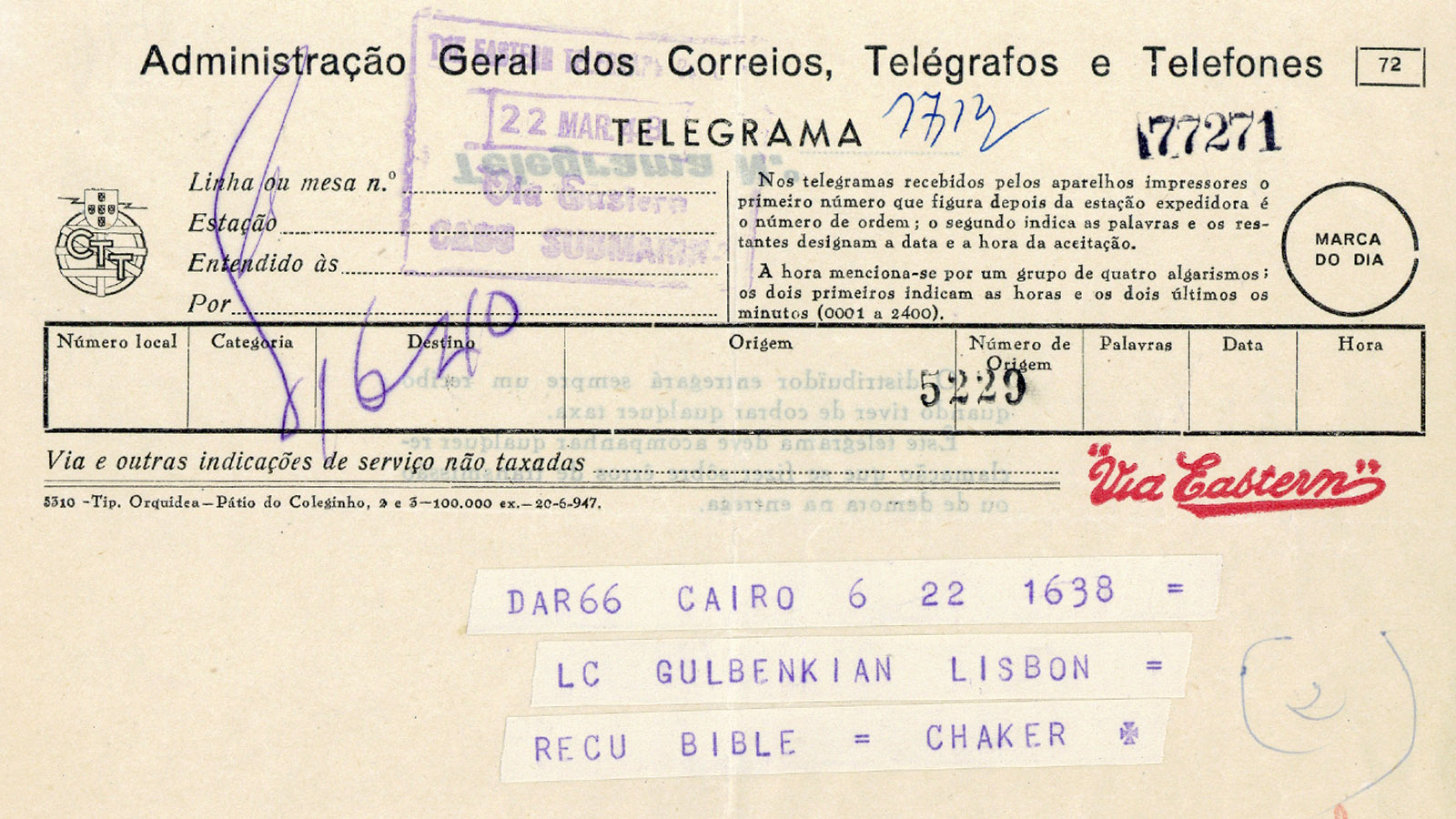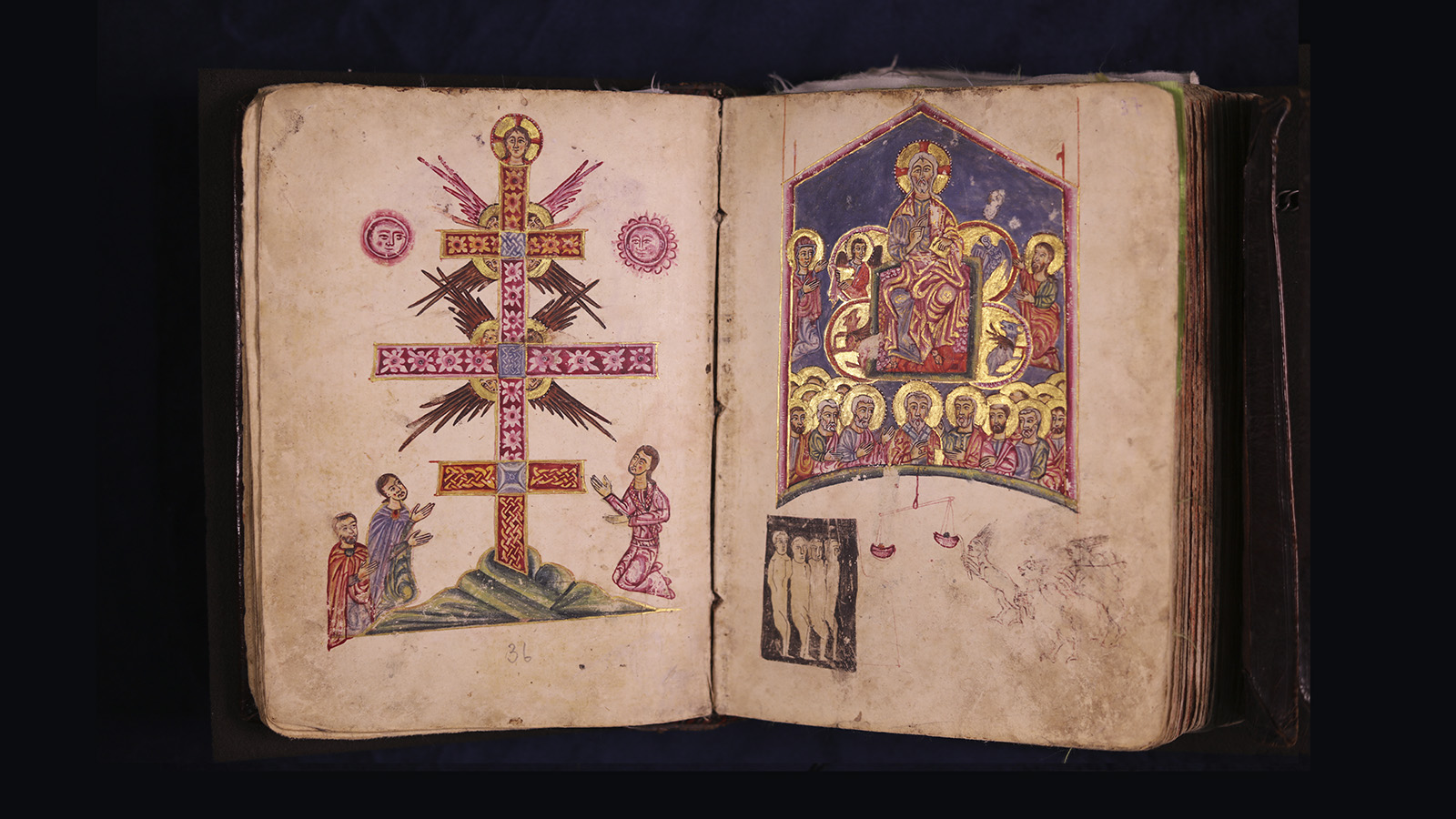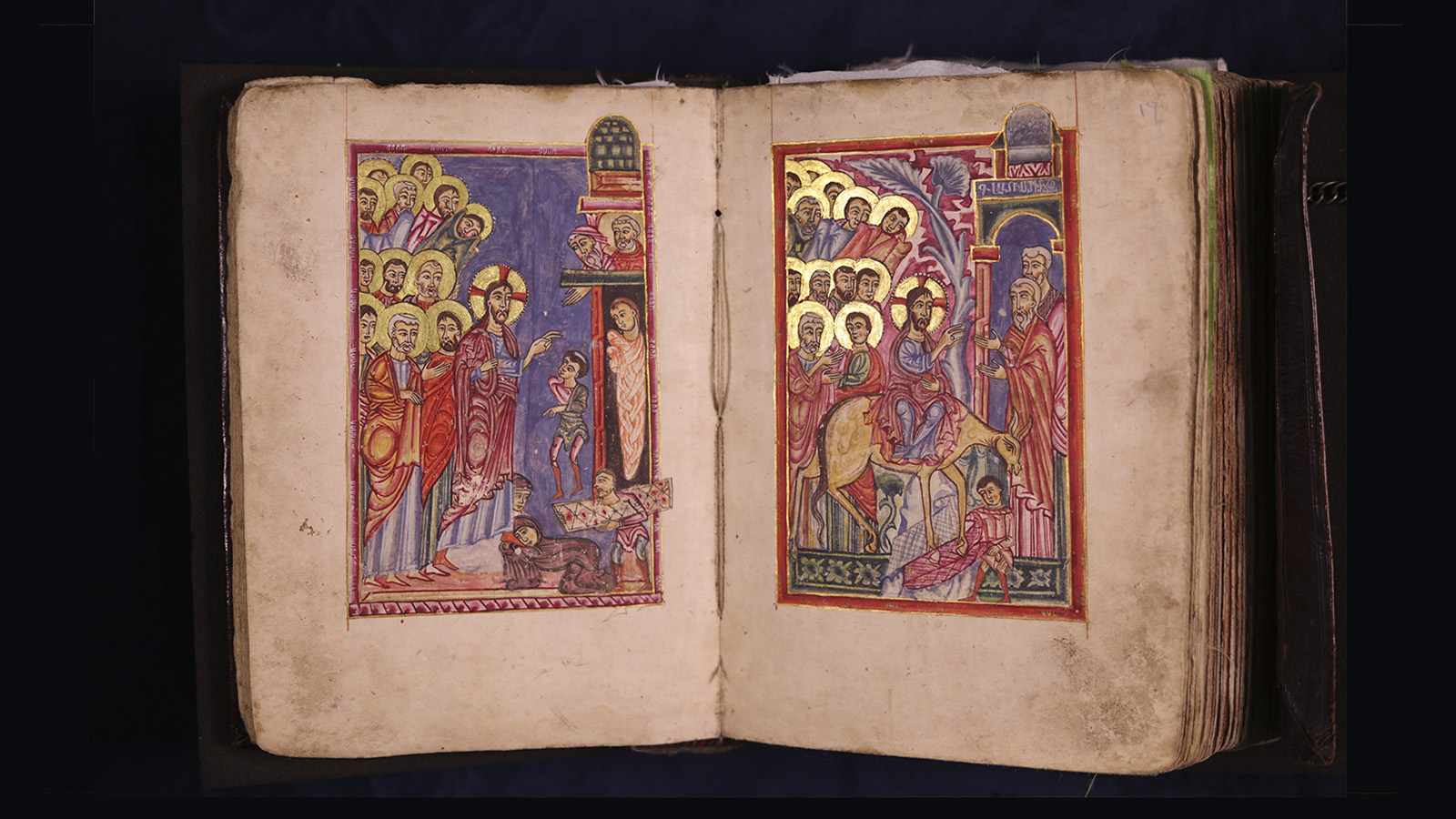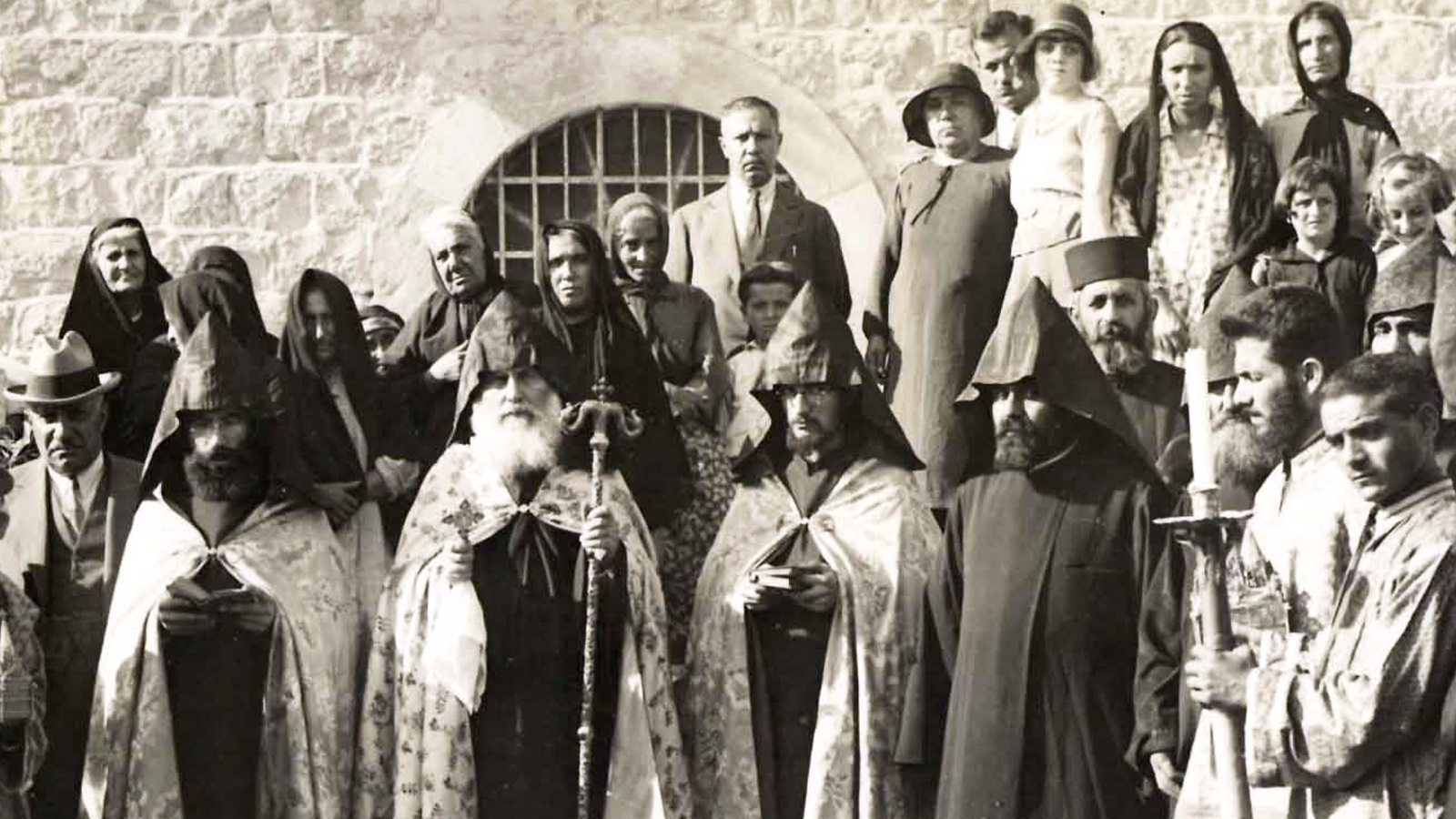Calouste Gulbenkian’s gifts to the Armenian Patriarchate of Jerusalem
Like other Ottoman Armenian families, the Gulbenkians established and cultivated important philanthropic relations with the Armenian Patriarchate of Jerusalem from at least the early 19th century. A firm advocate of the responsibility to preserve family heritage and traditions, Calouste Gulbenkian directed a significant portion of his philanthropic endeavours towards the Armenian Christian community in the Holy Land.
The Gulbenkian Library is the most prominent reminder of Calouste Gulbenkian’s relationship with the Armenian Patriarchate of Jerusalem. The project began in 1928, when the committee set up to commemorate the 50th anniversary of Patriarch Yeghishe I Tourian’s ordination to the priesthood proposed the construction of a library, launching a campaign to collect donations. Moved by the project, Calouste Gulbenkian not only agreed to contribute, but also offered to cover all the expenses, declaring that he was doing so in memory of his father, Sarkis Gulbenkian.
As was his wont, Gulbenkian closely monitored and engaged in the various stages of the process, using his trusted collaborators whenever necessary. Such was the case with O. Abdalian, former supervisor of the remodelling work at 51 avenue d’Iéna, Gulbenkian’s residence in Paris, who on this occasion was hired to assess the project and its specifications, which had been the work of E. Faitelson (architect) and Merguer Merguerian (builder).




The Gulbenkian Library was inaugurated on 23 October 1932, without the attendance of its main benefactor, as ever discreet and averse to the limelight. Gulbenkian’s first visit would not be until 1934, the experience leaving some indelible memories for the Armenian philanthropist. His lifelong commitment to the institution would be reflected in regular donations for books or other necessities for what would forever be, in Gulbenkian’s words to his daughter Rita and grandson Mikaël, ‘our library.’
There is an obvious connection between the Collector’s commitment to building the patriarchal library and his fascination with the art of the book in general, having himself assembled an extensive collection of manuscripts and printed works. It also serves as a fitting context for another gift: an Armenian gospel book, produced in Archesh (present-day Erciş, Turkey) and dated 1455, described by Gulbenkian as ‘very beautiful.’ The work had appeared on the market in London in 1947, at a Sotheby’s auction, its catalogue entry capturing his attention, not only for the beauty of its illuminations, but above all for the binding. The Collector, living in Lisbon at the time, requested that the quality of the manuscript be confirmed by Frederic Sutherland Ferguson, managing director of the antiquarian bookshop Bernard Quaritch, who ended up brokering the acquisition.
Sold for just £260 (plus a £40 commission for Ferguson), the book was delivered to the Gulbenkian Limited office in London. Unlike other works acquired during this period, Gulbenkian asked for the manuscript to be sent to Lisbon via his daughter, ‘because I am interested to see it.’ The illuminations by Minas, one of the most popular and prolific miniaturists of the Van School, and the Armenian calligraphy in bologir type (tiny cursive letter) by Father David (copyist), no doubt pleased the Collector. However, the gospel book did not end up with the other Armenian manuscripts already in the collection, ultimately being offeredto the Armenian Patriarch of Jerusalem, Guregh II Israelian.

Wishing it to be ‘an interesting addition’ to the patriarchal library, in 1948 Gulbenkian embarked on the task of sending the book to Jerusalem. Faced with the Arab-Israeli conflict, which had been triggered by the United Nations General Assembly’s approval of the Palestine partition plan, the process became somewhat tortuous. Initially, the manuscript was entrusted to John C. Wiley, the American ambassador in Lisbon, who had been appointed to a new post in Iran in 1948, and was due to pass through Cairo on his way to Tehran. In the Egyptian capital, the work would be received by Janig H. Chaker, an Armenian businessman who had played host during Gulbenkian’s trip to Egypt in 1934, and who was now asked to help send the work to Jerusalem as soon as conditions in the region allowed.
The final leg of this trip would not take place until 1950, after Chaker liaised with Mampré Sirounian, Archbishop of the Armenian Church in Cairo, to arrange sending the gospel book to the Gulbenkian Library in Jerusalem. The memory of this particular gift would be eternalised in the manuscript itself with an inscription in Armenian: ‘Offering from the honourable Calouste Gulbenkian.’




